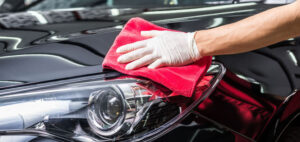Water Damage Restoration Utah is a service that a professional can offer to recover your home from the damages of a leaky pipe or flood. These professionals will be able to assess the damage and determine how much it will cost to restore your property.
There are many factors that can affect the cost of a water damage restoration job. Some of these include:

Water damage restoration professionals must first assess the extent of the damage. This is done by using two systems called category and class. Category 1 is clean water that comes from a sanitary source such as a burst pipe, while Category 2 is dirty water that contains contaminants such as organic and inorganic matter and microorganisms, like overflow from your toilet tank or a washing machine.
The next step is to determine what needs to be done to mitigate the damage. This can include removing and storing furniture, cleaning and sanitizing surfaces and materials, and drying and dehumidifying the area. It may also involve repairing structural problems and repainting or refinishing surfaces.
Taking immediate action is vital to prevent further damage and ensure that the property is safe. A good water damage mitigation company will have the right equipment and expertise to do this quickly and effectively. They will also be able to help you make the best decisions about your home or business’s future and what repairs are necessary.
If left unaddressed, water damage can lead to mold and other problems that are expensive and time-consuming to fix. This is why it is important to contact BMS CAT as soon as possible after a flood or water disaster.
When assessing water damage, it’s important to pay attention to details like odors and the color of surrounding materials. It’s also helpful to use technology like thermal imaging cameras and moisture meters to find hidden water damage or areas with increased moisture levels. With the SafetyCulture app, it’s easy to take photos of inspections and automatically generate reports for your clients and insurance providers. This eliminates the need for manual processes, like printing out photos and stapling them to paper reports.
Mitigating the Damage
When water damage restoration professionals arrive at your property, they will try to mitigate the damage as much as possible. This might include removing items that cannot be saved, covering damaged areas with tarps or boarding up broken windows to prevent further water damage.
They will also check the structure of your property. This includes ensuring that the electrical system is safe, and checking for any water damage to the foundation or walls of your home.
In addition, the team will attempt to determine the origin of the water. This is an important step in the mitigation process, as it helps to reduce the risk of further structural damage.
The team will also use a variety of tools to identify the level of water damage. For example, they will examine the drywall to see how saturated it is. They will also look for signs of rot or mold in the wood, which can lead to additional damage. The team may also test for bacteria in the water using a special device.
Once the experts have assessed the damage, they will create a plan to repair it. This will involve removing any items that cannot be saved, cleaning the rest of your home, and drying out the area. They will also work with your insurance provider to expedite the claim process.
It is vital to address water damage quickly to avoid deterioration of building materials and long-term damage to your home. For instance, if a pipe leaks for an extended period of time, it can weaken the foundation or cause rotting wood and other structural issues. This is why it is important to hire a professional company that uses eco-friendly cleaning and drying methods.
Drying the Area
Once the standing water has been removed, it’s important to dry the affected areas thoroughly. This is usually done by using air movers and dehumidifiers. Air movers work by blowing air through the wet areas, increasing air circulation and speeding up the drying process. Dehumidifiers remove moisture from the air, lowering the humidity and making it more comfortable in the home.
These machines also help prevent permanent damage to materials such as wood, drywall and flooring, as well as furniture and appliances. By removing the moisture from these materials, they will return to their normal moisture levels and will not be at risk of warping, swelling or rot.
Water restoration professionals can also preserve possessions that would otherwise be damaged by the water, such as electronics, documents and even precious family heirlooms. They can use specialized drying methods and deodorization to restore these items, saving you time and money.
Finally, these professionals have the expertise and equipment to spot hidden moisture pockets, ensuring that all of the water has been pumped out of your home or business and that everything is completely dried before moving on to the next step. They can also dispose of the water safely, which is essential as dumping it into storm drains can lead to serious environmental issues.
Once the area has been properly dried, it’s time to start cleaning and sanitizing. This can include removing any drywall, carpeting and other unsalvageable materials as well as vacuuming up any remaining dirt or debris in the space. Then, the space can be sanitized with steam cleaners or commercial sanitizing solutions to remove any bacteria and make it safe for living again.
Cleaning the Area
When water damage restoration professionals are on the job, they will remove any items or structures that can’t be saved and then clean, dry, and sanitize the area. This step is critical to avoid long-term damage and mold growth, and it can be accomplished using a variety of methods, depending on the circumstances.
If you have the right equipment, including a wet/dry vacuum and large fans, you can mitigate some or all of the water damage yourself. However, the best way to protect your property and health is to call a water restoration company as soon as you can. They have the specialized tools and expertise to do the job quickly, efficiently, and safely.
In addition to water removal, restoration companies can also dry out the affected materials and structures by circulating air with high-velocity fans and commercial grade dehumidifiers. They may also use thermal imaging to create a moisture map of the area and develop strategies for drying. They may also test the water for bacteria and fungus.
Once the area is dry, the restoration experts will move any salvageable items back into place and make any necessary repairs. They will then communicate with you about the estimated cost and time frame for completion of the work. Depending on the insurance policy and coverage amounts included in it, water cleanup, restoration, and repair may be covered by your insurer.
If you’re looking for a local company that can handle emergency water damage restoration and repair, look for one that offers 24/7 service and provides a free consultation and estimate. It should also have certified water damage restoration technicians, experience in handling complex projects, and the appropriate licensing and insurance coverage to do the work safely and effectively.
Repairing the Damage
Water damage restoration professionals can repair the damaged materials in your home, such as floors, walls and furniture. They can also replace any items that were destroyed in the flood. After the repairs are completed, they will dry the remaining area of your home and dehumidify it to ensure that no moisture remains. This is an important step because moisture can lead to mold, which can cause serious health issues for you and your family.
Depending on the extent of the damage, this process can take a lot of time. However, it is crucial to start the restoration process as soon as possible because wet materials will begin to develop problems like mold within 24 hours. Therefore, if you notice any water damage in your home, it is essential to call for professional help immediately.
Before deciding on a restoration company, it is a good idea to find out about their experience and qualifications. For example, you should find out if they are certified and whether or not they are insured. You should also find out if they accept your type of insurance. Additionally, it is a good idea to ask for references from previous clients.
Water damage restoration can be a major undertaking, but it is important to get it done as quickly as possible to minimize the risk of long-term problems. This includes reducing the chance of a flood in the future by keeping gutters clean and repairing any leaky roofs. You should also consider making exterior updates that will help to divert water away from your house, such as extending downspouts and installing rain barrels. By taking these steps, you can avoid costly water damage restoration services in the future.







